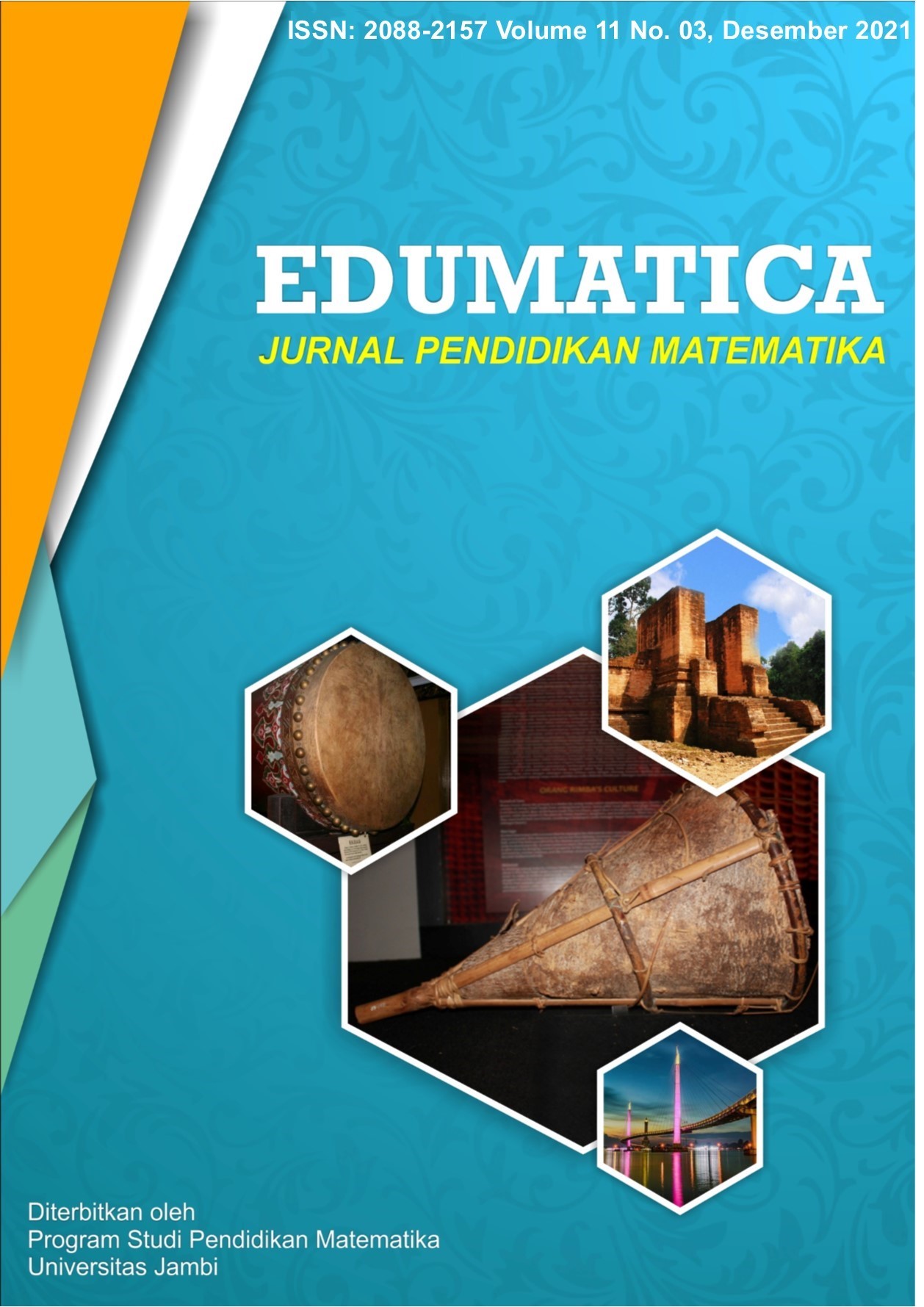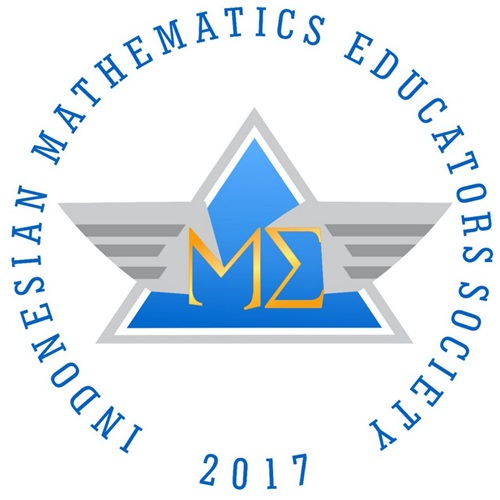Improving Students' Ability in Solving Mathematics Problems by Asynchronous and Synchronous Online Learning
DOI:
https://doi.org/10.22437/edumatica.v11i03.15324Keywords:
class action research, learning videos, mathematics problems, student worksheetsAbstract
Online learning during the Covid-19 pandemic experienced various obstacles, especially on quotas, internet signals, and unsatisfactory learning outcomes. This research was aimed to improve the ability of 7th grade junior high school students in solving mathematics problems through asynchronous and synchronous approaches using learning videos, student worksheets and mathematics problems. This research was classified as class action research. The research subjects were 14 of 7th grade students from a public junior high school located on the suburb of Palangka Raya city, Central Kalimantan in the 2021/2022 academic year. The research was carried out in two cycles where the stages of each cycle were planning, implementating, observing and reflecting. The research instruments were lesson plans, mathematics problems, student worksheets, videos, pre- quizzes and end-of-cycle tests. The results of first cycle showed that average of the students' score was 7,1 (scale of 0-16) which 5 of 14 students (35,7%) sgot score at least 2 (scale of 0-4) in each problem. At second cycle, average of the students' score was 10.4 and all students got score at least 2 in each problem. Thus, the online learning in this research was able to improve students' ability to solve mathematics problems.
Downloads
References
Abdullahi, U., Sirajo, M., Saidu, Y., & Bello, U. (2020). Stay-at-home order and challenges of online learning mathematics during covid-19 case in Negeria. IOSR Journal of Research & Method in Education, 10-17. doi:10.9790/7388-1004061017
Adnan, M., & Anwar, K. (2020). Online learnng amid the covid-19 pandemic: students' perspectives. Journal of Pedagogical Sociology and Psychology, 2(1), 45-51. doi:10.33902/JPSP. 2020261309
Ammy, P. M. (2020). Analisis motivasi belajar mahasiswa menggunakan video pembelajaran sebagai alternatif pembelajaran jarak jauh (PJJ). Jurnal Mathematic Paedagogic, 5(1), 27-35.
Azhari, B., & Fajri, I. (2021). Distance learning during the Covid-19 pademic: School closure in Indonesia. International Journal of Mathematical Education in Science and Technology, 1-22. doi:10.1080/0020739X.2021.1875072
Febrianto, P. T., Mas'udah, S., & Megasari, L. A. (2020). Impementation of online learning during the covid-19 pandemic on Madura Island, Indonesia. International Journal of Learning, Teaching and Educational Research, 19(8), 233-245. doi:10.26803/ijlter.19.8.13
Lestari, W. (2017). Pengaruh kemampuan awal matematika dan motivasi belajar terhadap hasil belajar matematika. Jurnal Analisa, 3(1), 76-84. Retrieved from https://journal.publication-center.com/index.php/ijece/article/view/141/68
Mairing, J. P. (2018). Pemecahan masalah matematika: Cara siswa memperoleh jalan untuk berpikir kreatif dan sikap positif [Mathematics problem solving: The way of students to acquire creative thinking and positive attitudes]. Bandung, Indonesia: Alfabeta.
Mairing, J. P., Sidabutar, R., Lada, E. Y., & Aritonang, H. (2020). Synchronous and asyncrhonous online learning of advance statistics during Covid-19 pandemic. Journal of Research and Advances in Mathematics Education, 6(3), 190-205. doi:10.23917/jramathedu.v6i3.13477
National Council of Teachers of Mathematics [NCTM]. (2000). Principles and standards for school mathematics. Reston, VA: The National Council of Teachers of Mathematics, Inc.
Nuritha, C., & Tsurayya, A. (2021). Pengembangan video pembelajaran berbantuan Geogebra untuk meningkatkan kemandirian belajar siswa. Jurnal Cendekia: Jurnal Pendidikan Matematika, 5(1), 48-64. doi:10.31004/cendekia.v5i1.430
Octavyanti, N. P., & Wulandari, I. G. (2021). Video pembelajaran berbasis pendekatan kontekstual pada mata pelajaran matematika kelas IV SD. Jurnal Edutech Undiksha, 8(1), 66-74. Retrieved from https://ejournal.undiksha.ac.id/index.php/JEU/index
Pusat Asesmen dan Pembelajaran. (2020). AKM dan implikasinya pada pembelajaran. Jakarta, Indonesia: Badan Penelitian dan Pengembangan dan Perbukuan Kemdikbud.
Putra, Z. H., Witri, G., & Sari, I. K. (2020). Prospective elementary teachers' perspective on online mathematics learning during corona virus outbreak. Journal of Physics: Conference Series, 1655(012057), 1-7. Retrieved from https://iopscience.iop.org/article/10.1088/1742-6596/1655/1/012057
Rosiyanti, H., Adriansyah, A. F., Widiyasari, R., & Dewi, N. S. (2020). Analisis persepsi peserta didik terhadap video pembelajaran matematika kelas VIII pada masa pandemi. Seminar Nasional Penelitian 2020 (pp. 1-11). Jakarta, Indonesia: Universitas Muhammadiyah Jakarta.
Sulistio, A. (2021). Peningkatan prestasi belajar bahasa Inggris melalui pembelajaran jarak jauh (PJJ) dalam penerapan pembelajaran sinkron dan asinkron melalui google classroom, google meet dan aplikasi e-learning. Secondary: Jurnal Inovasi Pendidikan Menengah, 1(2), 63-69. doi:10.51878/secondary.v1i2.128
UI, A. P. (2020, Maret 20). Pendidikan Jarak Jauh Universitas Indonesia. Retrieved November 18, 2020, from Sinkronus atau asinkronus: https://pjj.ui.ac.id/ufaqs/sinkronus-atau-asinkronus
Widiantari, A. A., Wesnawa, I. G., & Mudana, I. W. (2021). Pengaruh pembelajaran daring dengan pendekatan asinkronus dan sinkronus terhadap minat dan prestasi belajar ekonomi. Media Komunikasi FPIPS, 20(2), 151-160. doi:10.23887/mkfis.v20i2.37799
Yulita, H. (2014). Faktor-faktor yang mempengaruhi efektifitas dan motivasi mahasiswa dalam menggunakan metode pembelajaran e-learning. Business & Management Journal Bunda Mulia, 10(1), 106-119.
Downloads
Published
How to Cite
Issue
Section
License
Copyright (c) 2021 jackson Pasini mairing, Maulida Rezeki, Henry Aritonang, Elyasib Yunas Lada, Langkis Langkis

This work is licensed under a Creative Commons Attribution-NonCommercial-ShareAlike 4.0 International License.







